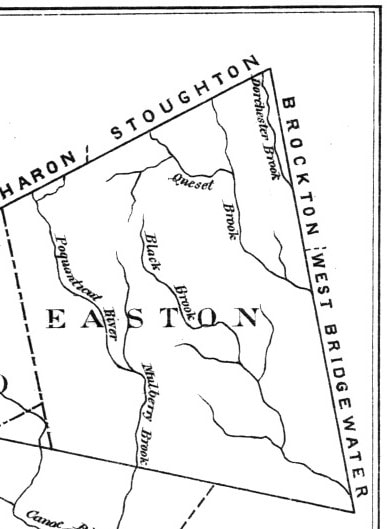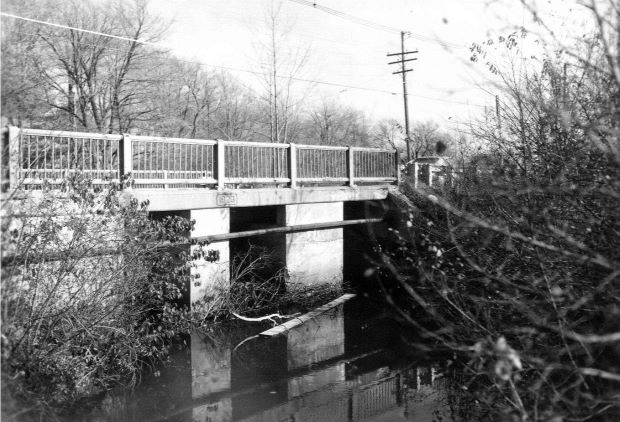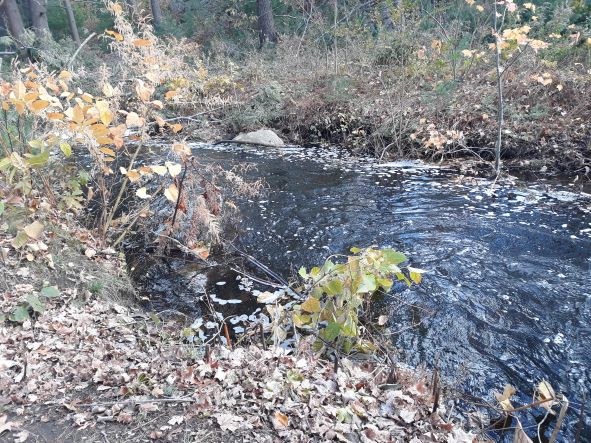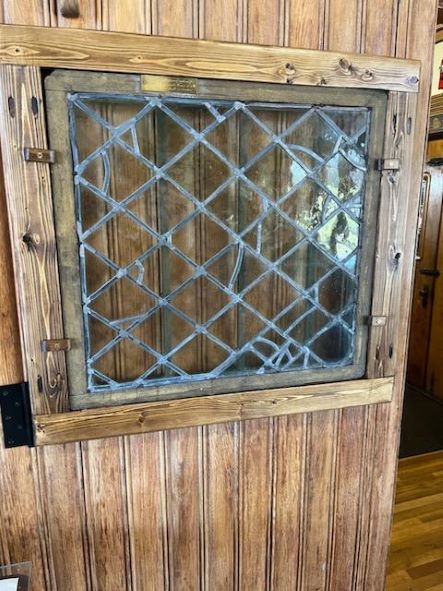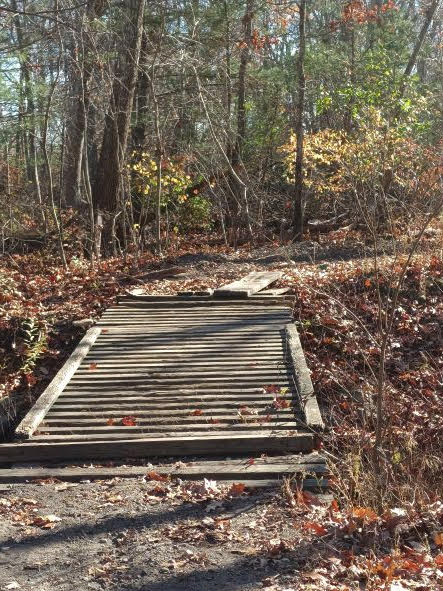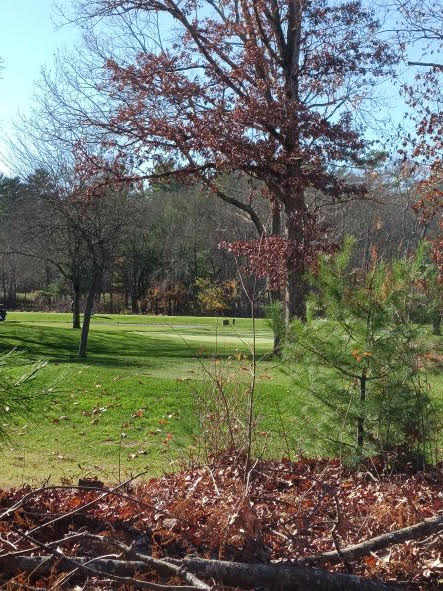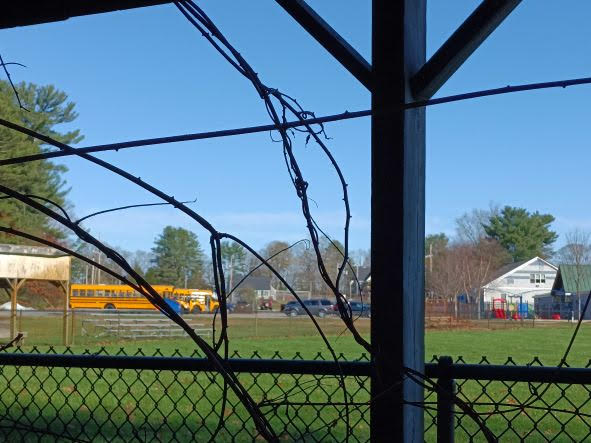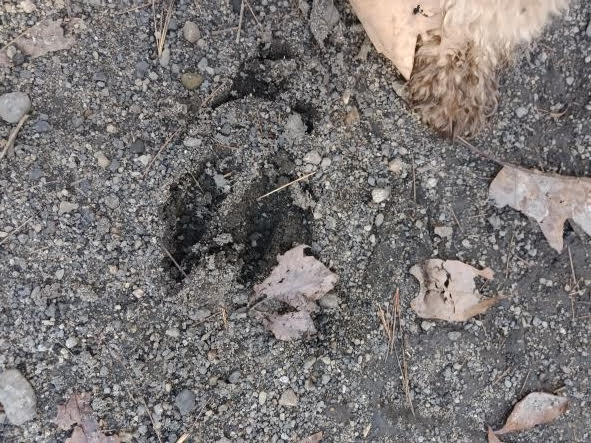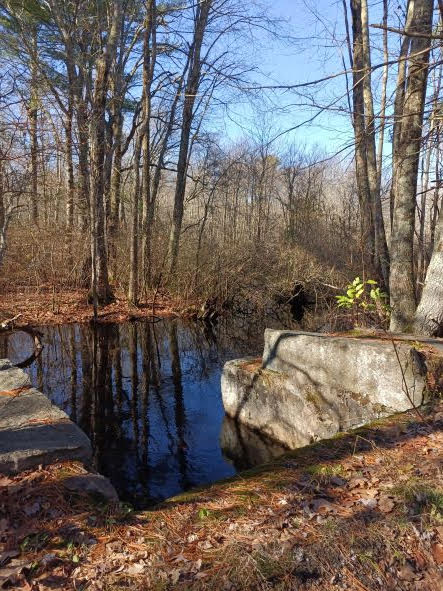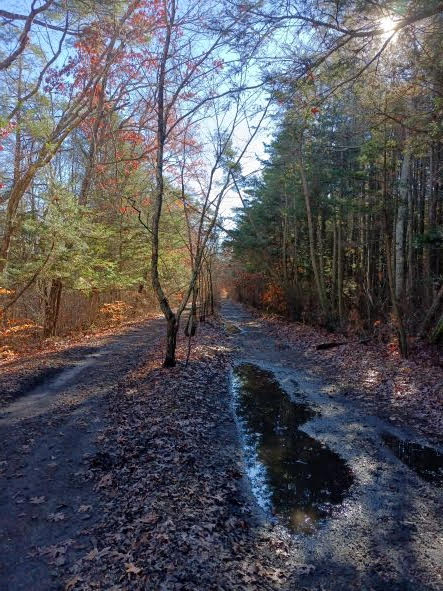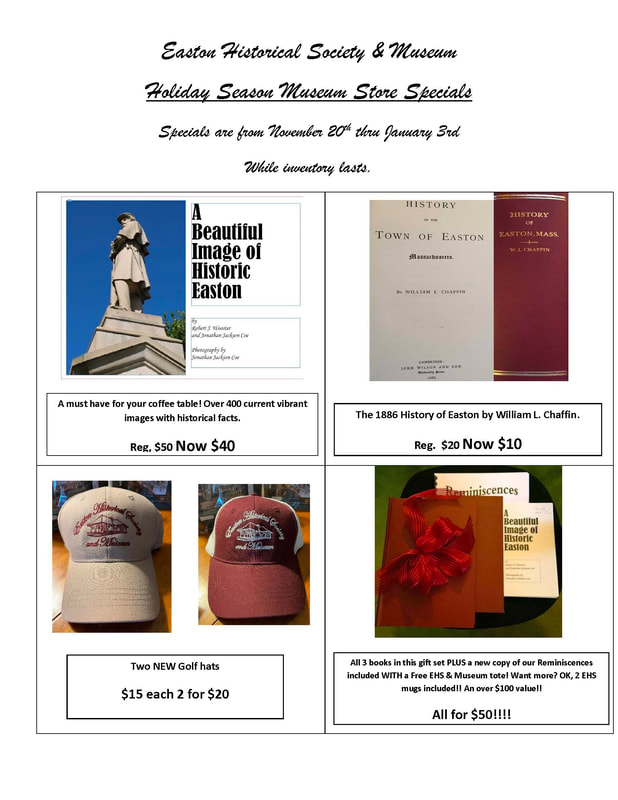|
The Queset The Queset is a lovely brook that runs through the villages of North and South Easton, and on into West Bridgewater, eventually becoming part of the headwaters of the Taunton River. According to Chaffin in the History of Easton, the name Queset was recorded for the first time in 1825. Earlier, the brook was called Mill River, Saw-mill River, Trout-hole Brook, or Brummagem River- after Eliphalet Leonard’s Brummagem Forge. Chaffin believed that Queset was probably a corruption of Cowisset or Coweset, by the people of Bridgewater, who mistook it for another river that was also located in the Taunton North Purchase, but further to the west, in Norton. On a 1736 map Mill River was mistakenly named Cowisset (map from state archives, vol. cxiv. p. 211). Partial view of the map of the Taunton North Purchase showing the main waterways in Easton, including Queset. Today Queset Brook flows out of Ames Long Pond, crossing under Canton Street and going on to meet a tributary formed by the small streams that were at one time (1846-1968) dammed to form Flyaway Pond. After meeting at Picker Field, the combined waters flow west of Canton Street, under Main Street near the Queset House, into Shovel Shop Pond then onto Langwater Pond where it joins Whitman’s Brook flowing south from Easton’s northeast corner. After crossing under Main Street at the Langwater Pond Dam and into Sheep Pasture, flowing south and then east into Morse’s Pond in Easton Center, the Queset continues east under Washington Street, into Dean Pond, and under Turnpike Street to the join with Coweeset Brook near Walnut Street, then travels south to join the Town River in West Bridgewater. Water was of great importance to the early (and later) industries in Easton. A few examples: a saw-mill was built in South Easton sometime before 1700 by Thomas Randall, Sr., Thomas Randall, Jr., and Nathaniel Packard. It was located near the dam on the Queset that existed in Chaffin’s time. (His History of Easton was published in 1886.) Clement Briggs had a grist-mill at the same dam prior to 1713. The third industry known was the Leonard Forge at Stone’s Pond (Fred’s Pond, Langwater) in North Easton. It was working in 1723. In 1716, Capt. James Leonard purchased land on both sides of ‘Trought-hole Brook’ (Queset) to start an iron business. He built a dam, and the business was operational sometime before 1723. Bridge over the Queset at Washington Street, South Easton. Easton Historical Society. The stream gives its name to historic Queset House and Queset Gardens in North Easton and more recently Queset Commons, an apartment complex near Stoneforge Restaurant, and Queset Medical at 20 Roche Bros Way in North Easton. I agree with Chaffin that ‘Queset’, although likely a ‘mistake of a name’, is a pleasant sounding and agreeable name. We live in a different sort of world today; the Queset, and the ponds its dams have created, are enjoyed for their aesthetics more than their practical uses. Queset flowing near Governor Ames Estate. The wind pushes the water Across the pond, over the dam Hard into the granite bones of the Streambed, breaking it black and white Hello Everyone! Of special note on this newsletter: On display now at the Historical Society is this beautiful window brought from England for the Edward Hayward 1714 house. The window is in the Tudor style (1550’s – early 1600’s). The house was southeast of the Joseph Hayward (red) house currently at 227 Foundry Street. According to Ed Hands in Easton’s Neighborhoods, Edward Hayward moved to Easton in 1713 when “the road from West Bridgewater ended at his new house.” He was the first of many Haywards to live in and improve the Hayward-Poole neighborhood. The window is displayed in a special frame crafted by Jon Coe.
1 Comment
I’ve been reading the Easton Bulletin dated June 1, 1888. Geo. H. Jenkins was publisher & proprietor, Dr. F. E. Tilden, the editor. A one-year subscription, paid in advance, cost two dollars. A single copy, 5 cents. It was to be published every Friday. So many things were different in 1888, but many things were the same, including human nature. The Bulletin met many needs of the residents of Easton; it was the social media of the day. The Bulletin included a train schedule, church directory, social directory, humor, baseball scores, local news, gossip, poetry, fashion news, an installment of ‘A Novel’ by Florence Alden Gray, advertisements and more. Of interest was News and Notes for Women. Easton women were advised that pale pink and gray were favorite colors in cotton dresses, that women in New York had taken to walking for exercise in large numbers and doctors were complaining. (I am not sure why doctors were complaining.) Apparently, Queen Victoria of England frowned on electric lights in her palaces. A Mrs. Shoemaker of Missouri was applauded for not being a ‘gadder’. She was perfectly well, thank you, but hadn’t left home in 25 years, not even to go next door. In an article on the recent Memorial Day festivities, it was reported that Dr. J. C. Swan spoke of his wish that every soldier be pensioned, and he was glad to pay his share, of his father’s strong anti-slavery sentiment and joy at reading Lincoln’s Emancipation Proclamation. Rev. F. A. Warfield of Brockton spoke for an hour, praising the courage of Northerners during the ‘60’s (Civil War) and their heroic spirit, holding the attention of all. The day was declared most successful. Hood’s Sarsaparilla was advertised as a cure for many things. A personal testimonial from A. A. Riker of Utica, NY claims- if one feels languid or dizzy, has no appetite or no desire to work, the beverage will cure you. “It makes the weak strong.” 100 doses for $1. There was a local news section for each part of town: Centre Casuals, South Easton Etchings, Sequasset Sketches, Furnace Flickerings. Many of the notices here were pedestrian, about people visiting, ‘stopping’ somewhere, being gifted a colt, becoming ill or housebound. A few were very odd by modern standards. Centre Casuals: “Herbert Hewitt is a solid lad. He is 9 years old and weighs 128 pounds.” Furnace Flickerings: “Robert Willis, an old citizen of this place, was taken to the Taunton Lunatic Asylum last Tuesday.” “Frank Belcher has got a new bicycle. It’s a dandy.” And in “Here and There: Tommie Fish, a lad of 12 years of age, was accidentally shot in the thigh by the premature discharge of a toy cannon with which he was playing.” The femoral artery was narrowly missed, surgical aid was called, and he was doing well. Tommie Fish lived in Unionville. Recipes were included for: Rice entrée, potato turnovers, oranged strawberries, and rice and asparagus soup. Just for fun, I made the rice entrée. Recipe: Stew a cup of rice until well done, add a small cup of milk, two well beaten eggs, pepper and salt to taste, pour into a shallow pan, sprinkle grated cheese thickly over the top and bake until the top is nicely browned. It looked pretty, tasted OK; wouldn’t make it again. Rice entrée made with recipe from Easton Bulletin, 1888. An interesting article titled “No Almshouses in China” contrasted the US and China in regard to how the poor were treated. The author argued that so many people in the Empire of China lived at subsistence levels that 2/3 of the population would qualify for aid if it were available. However, accommodations in US almshouses were luxurious in comparison, with clean beds and good food. (Youth’s Companion)
The Bulletin was full of far too many stories to adequately sum up, but I’ll end with a story that claims Pond Street is becoming one of the prettiest streets in the village. Elm trees set out years before by Henry McArdle are growing tall, and there is a beautiful view of the Governor’s residence across the ‘clear transparent waters.’ A nice street for an evening’s promenade. It is still a lovely view today. Blue heron, still in profile On the bank of Shovelshop Pond Archaic line drawing Superimposed onto now Anne Wooster Drury [email protected] -- My Walk of Easton’s Railroad Line, Continued. From Old Easton Center Depot to Former Taunton-Raynham Greyhound Park. I set out from Fernandes Lumber and Home Center about midday, the temperature was 50 degrees. Crossing Depot Street, I followed the path into the woods. Soon I came to a split where the path separated into two, one continuing to Purchase Street- which I took- and the other off to the east. The path was clear, easy to walk, and I observed footprints, dog prints and ATV tracks. I came across one leftover piece of track. It must have been forgotten when the tracks south of the Depot Street Station were removed, sometime before 1968. I crossed Purchase Street and continued toward Prospect. This stretch was uneventful. Shortly after crossing Prospect, I found myself between Pine Oaks Golf Course and Easton Country Club. To both sides were well-groomed greens and a handful of golfers. While I was passing through the course the ground was like a small roller coaster, up and down, perhaps connected to drainage? I crossed a wooden bridge at one point. Wooden bridge. Easton Country Club is to my left as I walk south. View of Pine Oaks green to my right. Once I was clear of the golf courses, I was aware of water off to the east and the west. To the east lay the cranberry bogs and Little Cedar Swamp. To the west Black Brook. When I reached Foundry Street there was the distinct smell of skunk in the air. I stopped here for the day. I wanted company on the remainder of my journey. A week later I set out with a friend and two dogs to complete my walk. It was sunny but cooler, about 44 degrees. The path was clear but wet wherever there was a depression in the ground which was regularly. It was not too difficult to walk around the wet areas and the dogs were happy to walk right through. After passing behind the Southeastern Regional School we were isolated. Not too far along we came upon some good-sized deer prints. Further on, a large deer crossed the path ahead of us. Too quickly for a photo. View of Regional School to my left as I walk south. Deer print. As we headed further into the Hockomock Swamp, a few facts. The Hockomock Swamp, covering 16,950-acres and spanning six towns, including Easton, is considered the largest freshwater swamp in the state. ‘Hockomock’ is an Algonquin term meaning ‘the place where spirits dwell’. Indigenous people hunted here and used it as a sacred burial site. The Wampanoag feared and worshiped the god ‘Hobomock’ who was made up of the souls of the dead and liked to gather in places like the Hockomock. It serves as the headwaters of the Town River which flows into the Taunton River. The swamp is home to at least thirteen rare and endangered species and is of archeological importance. While greatly valued by the indigenous peoples, the first European settlers were proponents of draining the swamp for agricultural purposes. Chaffin himself agreed with this. There are many and various tales of supernatural events occurring in the Hockomock. I’d hoped my walk would be drama free. There was one unusual occurrence. Shortly after the deer crossed ahead of us, a bird with a large wingspan appeared in the air ahead of us down the path, perhaps 20 yards away. From where we stood the wingspan appeared as wide as the path. We were both sure it was just a bird but also pretty sure it wasn’t a hawk. Perhaps a falcon? I don’t think it was the legendary ‘giant creature over six feet tall that resembled a bird’. It was quickly gone. Bit of a mystery. Bridge and evidence of a double track. This was toward the end of our walk. We parked one of our cars behind the old Taunton-Raynham Greyhound Track and stopped walking there We came upon a clearing where the power lines ran through and there was more evidence of ATV activity. In some areas the undergrowth was dense, in others less so. We passed three bridges that spanned the waters of Black Brook, the main branch of which was to our east. A good way into our journey there was evidence of a double railway track. The path split and a line of young trees ran down the middle. Overall, the walk was very nice but anticlimactic.
The Hockomock wasn’t as intimidating as I’d envisioned. At night, in the rain, or off the path, I’m sure it would be. Although we still can’t definitively explain that big bird! In granite cold, I Follow rust-colored Fragments of old tracks Going nowhere Anne Wooster Drury [email protected] Hello Everyone,
The Holiday Festival is this weekend and the Historical Society and Museum will be playing its part. What's happening: -The railroad station will be open this Saturday, from 8 AM to 4 PM and this Sunday, from 10 AM to 4 PM -The Society is having a merchandise sale for a limited time only, outlined in the attached flyer -The Garden Club is selling greens at the railroad station this Saturday, from 8 AM to Noon -Don't forget to check out the other town events, like the Festival of Trees or the Main Street Stroll Thank you for your continued support this holiday season and we hope to see everyone this weekend! Arielle -- Arielle Nathanson Interim Curator, Easton Historical Society and Museum www.eastonmahistoricalsociety.org 508-238-7774 |
Author
Anne Wooster Drury Archives
June 2024
Categories |
Easton Historical Society and Museum
PO Box 3
80 Mechanic Street
North Easton, MA 02356
Tel: 508-238-7774
[email protected]

